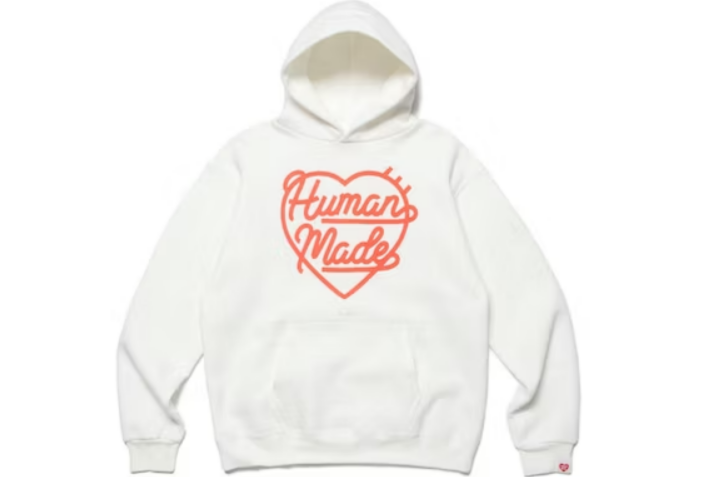
Human Made Clothing: Weaving Art and Sustainability
Human Made Clothing: Weaving Art and Sustainability
Clothing has been an integral part of human existence since time immemorial. While modern fashion has embraced mass production and global supply chains, a rising movement advocates for human-made clothing as an artisanal and sustainable alternative. https://humanmadeclothing.net/ is a form of artistic expression, deeply rooted in cultural traditions and craftsmanship. In this article, we delve into the world of human-made clothing, its evolution, its significance in the contemporary fashion landscape, and its promising future.
The Evolution of Clothing
Human-made clothing traces its origins back to ancient civilizations when our ancestors crafted garments from natural materials like animal hides, plants, and fibers. Over time, clothing evolved not only as a necessity for protection but also as a means of self-expression and cultural identification. Traditional weaving and hand-sewing techniques laid the foundation for the intricate craftsmanship that defines human-made clothing today.
Human-Made Clothing: An Artistic Expression
In a world dominated by mass-produced fashion, human-made clothing stands out as a work of art. Each piece is painstakingly crafted by skilled artisans who infuse their creativity and passion into every stitch. The attention to detail and personal touch make human-made clothing unique, reflecting the identity and story of its creator. From hand-woven textiles to hand-embroidered designs, human-made clothing preserves age-old techniques and celebrates the beauty of imperfections.
Sustainable Fashion and Human-Made Clothing
In an era marked by environmental concerns, sustainable fashion has gained momentum. Human-made clothing aligns perfectly with this ethos, as it promotes slow and mindful consumption. By choosing human-made clothing, consumers support ethical practices, fair wages, and minimal environmental impact. This aspect of sustainability has led to an increased appreciation for human-made clothing among environmentally conscious fashion enthusiasts.
The Impact of Technology on Human-Made Clothing
While traditional craftsmanship remains at the core of human-made clothing, technology has also played a significant role in its evolution. Advancements in design software, textile production, and communication have connected artisans with global markets, allowing their creations to reach a broader audience. However, striking a balance between modern techniques and preserving traditional craftsmanship remains crucial in the face of technological advancements.
Human-Made Clothing vs. Mass-Produced Fashion
Human Made Clothing: Weaving Art and Sustainability. The stark contrast between human-made clothing and mass-produced fashion lies in the individuality and character of each piece. Mass-produced garments, churned out in large quantities, often lack the soul and authenticity found in human-made clothing. While mass production caters to quick trends and lower costs, human-made clothing cherishes quality, timelessness, and a connection to cultural heritage.
The Importance of Supporting Artisanal Clothing
As human-made clothing faces competition from fast fashion, it is essential to support artisans and their craft. By valuing human-made clothing, we contribute to the preservation of age-old traditions and support local economies. Moreover, supporting artisans ensures that their skills and knowledge are passed down to future generations, preventing the loss of cultural heritage.
Embracing Cultural Diversity through Human-Made Clothing
Human-made clothing embodies the rich cultural diversity of our world. Each region boasts its distinct techniques, motifs, and designs, woven into the fabric of its clothing. Embracing human-made clothing means celebrating and preserving these cultural treasures, fostering cross-cultural understanding and appreciation.
The Psychology of Wearing Human-Made Clothing
There is a profound psychological impact when wearing human-made clothing. The knowledge that a garment carries a piece of the artisan’s soul and heritage makes it more than just fabric on the body. It becomes a source of pride, confidence, and a way to connect with humanity’s collective story.
Tips for Choosing and Caring for Human-Made Clothing
When investing in human-made clothing, consider these tips to make the most of your purchase:
- Understand the materials and craftsmanship involved.
- Look for clothing that resonates with your personal style and values.
- Follow care instructions diligently to ensure the longevity of your garments.
- Support local artisans and small businesses to promote sustainable practices.
Future Trends in Human-Made Clothing
The future of human-made clothing appears promising, thanks to the growing appreciation for artisanal craftsmanship and sustainable fashion. As consumers prioritize quality and uniqueness, human-made clothing will continue to thrive, inspiring innovative designs and collaborations across cultures.
How to Support Human-Made Clothing Brands
To support the human-made clothing movement:
- Seek out local artisans and independent designers.
- Share their work on social media to increase visibility.
- Educate others about the significance of human-made clothing.
- Participate in workshops and events that promote traditional craftsmanship.
Exploring Different Fabrics and Techniques in Human-Made Clothing
Human-made clothing encompasses a wide array of fabrics and techniques, each with its charm and appeal. From hand-loomed cotton to intricately embroidered silk, exploring the diversity of human-made textiles unveils a world of beauty and cultural richness.
The Role of Fashion Education in Preserving Human-Made Clothing Traditions
Fashion education plays a crucial role in preserving and passing down human-made clothing traditions. By incorporating traditional techniques and knowledge into the curriculum, aspiring designers can contribute to the sustainability and continuation of human-made clothing practices.
Conclusion
Human-made clothing is more than just a style choice; it is a celebration of human ingenuity, creativity, and cultural heritage. As we navigate the complexities of modern fashion, embracing human-made clothing offers us an opportunity to reconnect with our roots, support artisans, and contribute to a more sustainable and culturally diverse fashion landscape.




